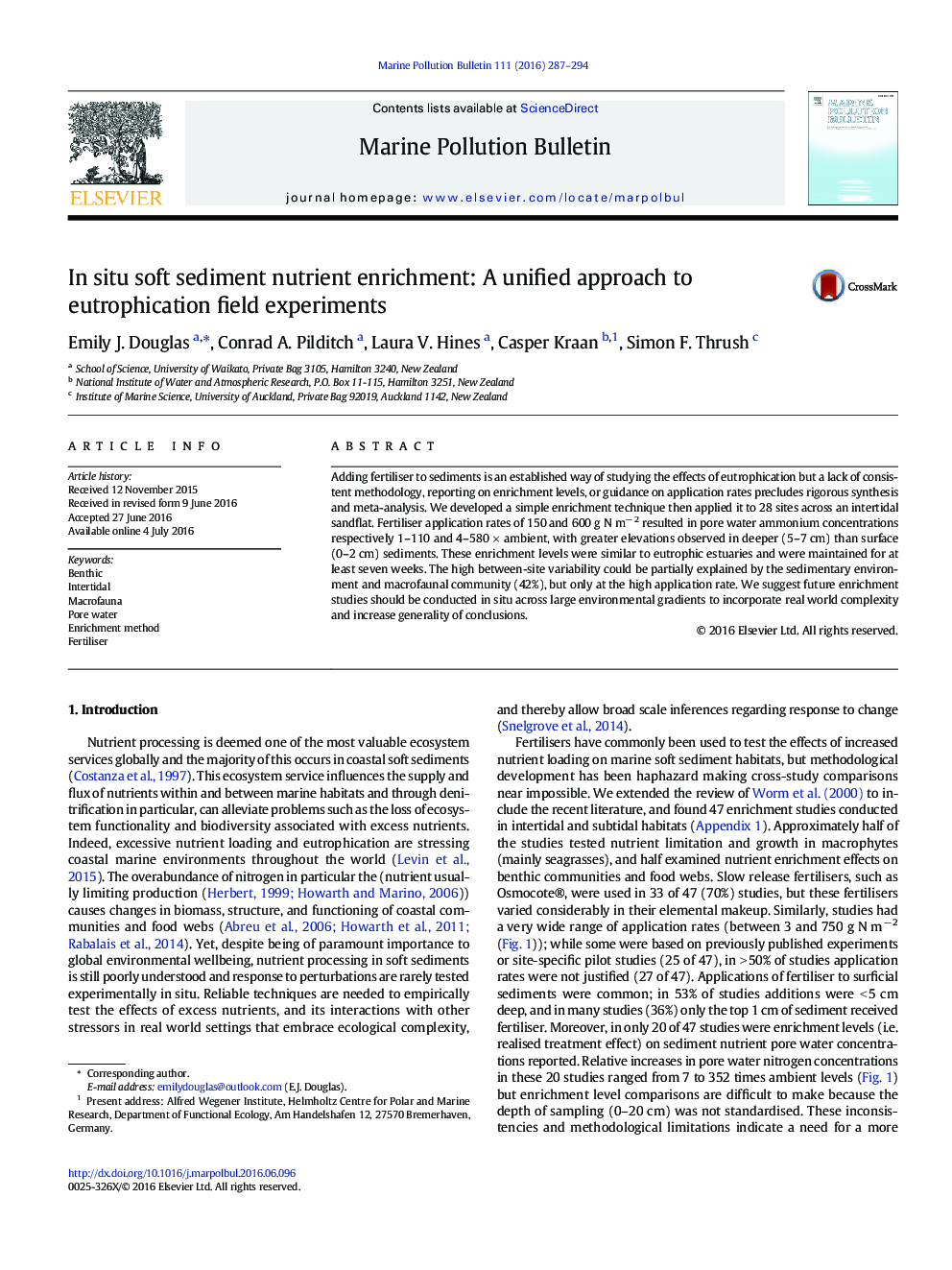| Article ID | Journal | Published Year | Pages | File Type |
|---|---|---|---|---|
| 4476315 | Marine Pollution Bulletin | 2016 | 8 Pages |
•A methodological gap exists in field-based sediment nutrient enrichment experiments.•We developed a simple and effective sediment enrichment method.•The method generates eutrophic pore water conditions for at least seven weeks.•Fertiliser application rate and sediment properties influence enrichment level.•New approaches are needed to enhance comparisons and future meta-analyses.
Adding fertiliser to sediments is an established way of studying the effects of eutrophication but a lack of consistent methodology, reporting on enrichment levels, or guidance on application rates precludes rigorous synthesis and meta-analysis. We developed a simple enrichment technique then applied it to 28 sites across an intertidal sandflat. Fertiliser application rates of 150 and 600 g N m− 2 resulted in pore water ammonium concentrations respectively 1–110 and 4–580 × ambient, with greater elevations observed in deeper (5–7 cm) than surface (0–2 cm) sediments. These enrichment levels were similar to eutrophic estuaries and were maintained for at least seven weeks. The high between-site variability could be partially explained by the sedimentary environment and macrofaunal community (42%), but only at the high application rate. We suggest future enrichment studies should be conducted in situ across large environmental gradients to incorporate real world complexity and increase generality of conclusions.
